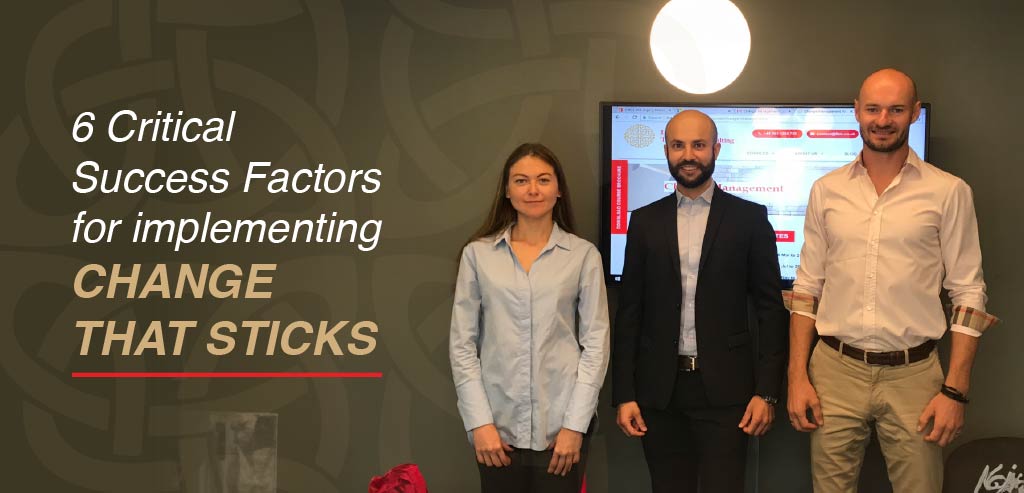
In organisational change, overcoming the distance between project completion and realised benefits is akin to navigating a “value gap.” The difference between the value realised upon project delivery and the projected return on investment stated in the business case is the cause of this discrepancy. This precise disparity in values highlights the vital significance of Change Management and the development of an adaptable atmosphere in any organisation.
The People-Centered Implementation (PCI®) methodology emphasises the importance of coordinating local and organisational change initiatives. By identifying six crucial success factors (CSFs), PCI® provides a framework for implementing long-term transformation. These elements, which have local and organisational components, work together to facilitate meaningful and long-lasting change efforts.
Now, let’s explore the six essential success factors:
Goal of Shared Change.
Creating a common understanding of the change’s goal brings focus and energy, which propels organizational alignment and individual buy-in.
Successful Transformational Leadership.
It is the responsibility of change leaders to lead by example by offering guidance, encouragement, and support that instills confidence and trust in staff members.
Strong Process of Engagement.
Strong employee engagement procedures actively include staff members, encouraging dedication, establishing new habits, and transmitting critical skills necessary for change success.
Dedicated Regional Sponsors.
Enabling middle and front-line managers to advocate for change within their respective spheres of influence fosters ownership,, and the divide between organizational mandates and front-line realities is closed.
Robust Individual Relationship.
Making the shift more relatable to the individual increases commitment by emphasising how important it is to one’s happiness and success.
Persistent Individual Performance.
Taking care of people’s issues and helping them through the transition process guarantees that performance will continue despite disruptive change.
Final word.
Although these components are outlined sequentially, their use is not required to follow a strict linear sequence. Contextual subtleties as a change agent need modifying the strategy to fit the current situation. For example, early support for change initiatives could be determined before defining a common goal.
Understanding the complex requirements of change leadership and extensive skill sets, procedures, and resources is essential. With these insights, you may more adeptly manage the intricacies of change and effect significant transformation inside your company. Consider enrolling in an extensive change management course to expand your knowledge and spearhead successful change projects.

Leave a Reply